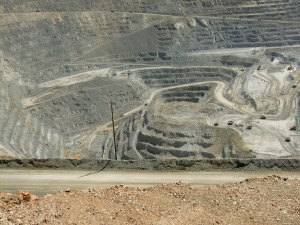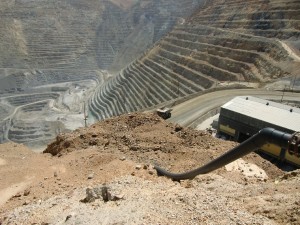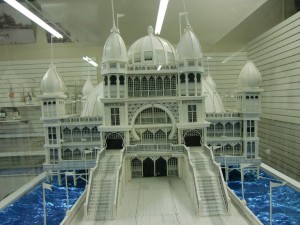THE BEST OF THE WEST – AROUND THE OUTSKIRTS OF SALT LAKE CITY
THE BEST OF THE WEST
This is the fourth in a series of articles about traveling the west by bus
AROUND THE OUTSKIRTS OF SALT LAKE CITY
By Charles N. Stevens
Photos by Dolores Seidman
We take a rest from history as we reach the Gateway Mall, a mixture of old and new buildings where we’ll have lunch. Actually it is built around the old but grand Union Pacific station and is an open-air mall featuring shops, restaurants, condominiums and even an office tower. We use an escalator to reach the second level where we are told we would find restaurants. We first take a long walk, getting our exercise and looking over all the shops. At the food court we are faced with so much noise and crowds that we decide to eat outside, munching on muffins left over from breakfast. Most interesting to us was a fountain where kids could frolic among jets of water and get wet, their happy voices resounding among the buildings.
By early afternoon we’re on our way to the Kennecott Copper Mines south and east of town in Bingham Canyon. Our bus rolls through open grasslands, several of us spotting a group of grazing prong-horned antelopes. Abruptly we come upon a gray mountainous pile of tailings, dark streaks running down it, the waste rock from the mining operations. It looks almost like the side of a volcanic cinder cone with gullies and swaths of brown, tan and mustard rock.
Our bus passes a checkpoint then heads up a steep road to the lip of the mine. Here we get out and walk to the protective railing of a viewing area. We look down into an unbelievably deep crater, stair stepped at various levels around its sides with dirt roads. Out of this vast pit rises the grinding sounds of monster trucks that constantly wind slowly up the roads loaded with gray ore, each leaving a trail of dust behind them. Empty trucks are on their way back down to reload. Close by is a visitors center where tourists can watch a film explaining the operation and look at glass cases displaying ore and equipment. But I’m more interested in that monstrous “hole” and the slow trucks that crawl up the steep roads like gigantic beetles, so I watch it as long as I can.
The trucks, called haul trucks, cost 3.5 million dollars each, and the mine has eighty of them. Just a single tire for the trucks costs 25,000 dollars. They can carry 320 tons of ore on a single trip, a ton of ore containing ten pounds of copper.
Leaving the great pit, we head westward towards the Great Salt Lake, arriving at its edge at a place called Saltair. It had been a very famous spot in the past, the sight of a grand pavilion of hotels topped with great onion domes. Tourists bathed in saltwater pools, dined or simply relaxed. A railroad brought in guests from Salt Lake City, a train leaving every 45 minutes. People enjoyed bobbing in the buoyant waters of the pool and the lake itself. Built in 1893, the pavilion suffered the fate of many other monumental wooden structures, and was destroyed by fire in 1925. One can still see the remains of the pilings on which it was built, still protruding from the lake.
Another, not quite so grand palace was built in its place, but later, facing hard times in the depression, the lure of the movies and the proliferation of cars, it gradually declined. People had better things to do. It was closed in 1958 and burned to the ground in an arson fire in 1970.
The Saltair Pavilion that we see today, built in 1981 is a remnant of the third attempt to bring back the fame of the location. Although concerts and band concerts as well as singers like Bob Dylan performed here, it is largely empty. It is a long stucco building capped at each corner with replicas of the famous onion domes of the past. Inside, I stand on its vast brick floor looking at a wooden dance floor and up into a maze of rafters, the sun filtering in through skylights. The place gives me the feeling of emptiness and abandonment. A large mirrored ball hangs from one rafter, awaiting the next scheduled dance. In one corner stands a large, delicate model of the original Saltair Pavilion. Outside, I glance up at the building, noting that swallows have built their mud nests under the eaves. I peer out over the intense blue of the Great Salt Lake to the sharp reddish hills beyond.
Back in Salt Lake City, our hunger stoked by all we had seen, we cruise through the Chuck-A-Rama, a grand buffet featuring a vast array of temptations, urging the customer to eat all that he can. Dangerous!

Looking down into the deep Kennicott Copper Mine is awesome.

We never grow tired of peering down into that yawning crater.

The pavilion at Saltair is nothing compared to the older one shown in this model.

The latest Saltair Pavilion as it looks today.
MONTEREY PARK AUTHOR PUBLISHES 3RD BOOK ABOUT HIS EXPERIENCES IN WORLD WAR II- BACK FROM COMBAT
Charles “Norm” Stevens, a 40 year resident of Monterey Park and World War II Veteran has recently published the 3rd in his series about his experiences in WW II, Back from Combat: A WWII Bombardier Faces His Military Future. This book details the time from when he returned from combat in England where he flew 34 missions over Germany and France until the end of the war. Faced with large numbers of returning combat vets, and not knowing how long the war would continue, the military had to plan for their future. His options were whether to return to combat, become an instructor in the U.S., or receive new training that he would use in the Pacific. The book concludes with the end of the war with an Afterward that includes an update on the B-l7’s still flying in the U.S., as well as present day accounts pertaining to the war.
Stevens is the author of two previous books about his experiences:
An Innocent at Polebrook: A Memoir of an 8th Air Force Bombardier (Story of his 34 bombing missions from his base at Polebrook, England over Germany and France)
The Innocent Cadet: Becoming A World War II Bombardier (A prequel to the first, telling of his training in the U.S. before going overseas into combat.)
He is known to the readers of The Citizen’s Voice as the author of Travel Log Articles including “From Paris to Normandy on the Seine”, “Exploring New York” and “In Search of Snow.” He is retired, having taught for 32 years, primarily in the Montebello Unified School District.
Those interested in purchasing an autographed copy of any of his books, may contact the author at 323-721-8230 or Normstevens24@gmail.com.



